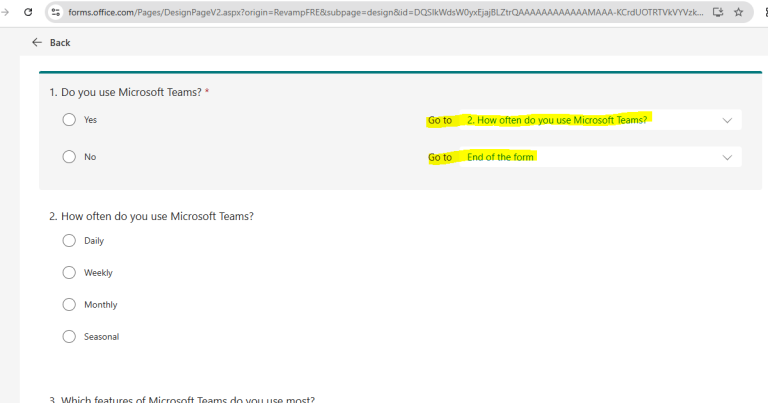Academic surveys are one of the most reliable methods for gathering insights in higher education, social sciences, and professional research. They help researchers measure behaviors, opinions, and experiences in ways that can be quantified and analyzed. Whether used by students conducting projects, universities evaluating learning experiences, or global institutions measuring trends, academic surveys remain central to advancing knowledge. This guide explains what academic surveys are, their importance, and the tools, templates, and platforms that make them effective.
What Are Academic Surveys?
Academic surveys are structured questionnaires designed to collect data for educational or scholarly research. Unlike general feedback surveys, they are tailored to meet specific research objectives. For instance, a psychology student might design an academic survey to measure stress levels among undergraduates, while a global institution may conduct a large-scale academic survey on international learning outcomes.
The primary purpose of academic surveys is to generate reliable data that can support theories, evaluate interventions, or test hypotheses. They provide a balance between qualitative insights and quantitative analysis, allowing researchers to draw conclusions that are evidence-based.
Academic surveys differ from casual surveys in their rigor. They must adhere to ethical standards such as informed consent and confidentiality. They also need to be designed carefully to avoid bias, ensure reliability, and maintain validity.
In research, academic surveys are supported by specialized academic survey tools and academic survey software. These platforms allow researchers to design structured questionnaires, distribute them digitally, and analyze responses efficiently. The combination of thoughtful survey design and robust technology ensures that academic surveys remain an indispensable method of data collection in research.
Student Surveys and Their Importance in Education
Student surveys form a crucial part of academic surveys. They are widely used in schools, colleges, and universities to gather feedback about the learning experience. For example, institutions often distribute student surveys to measure satisfaction with teaching quality, learning materials, or campus facilities.
The importance of student surveys lies in their ability to highlight areas of improvement. When students share their opinions through structured questions, administrators can identify gaps in curriculum design, teaching effectiveness, and student support services. This data-driven feedback loop strengthens educational outcomes.
Student surveys are also instrumental for research projects. Many undergraduate and graduate students use them to collect primary data for dissertations, theses, and coursework. Academic survey templates available on platforms like Qualtrics, SurveyMonkey, or Google Forms simplify this process by providing ready-to-use structures for different types of studies.
In addition to internal use, national and global organizations often rely on large-scale student surveys to assess education systems. These surveys provide policymakers with benchmarks for comparing student experiences across regions and countries.
Choosing the Right Academic Survey Tool
The success of an academic survey often depends on the survey tool used. An academic survey tool is a platform that enables researchers to create, distribute, and analyze surveys with ease. Choosing the right tool ensures accuracy, scalability, and reliability of results.
When selecting a survey tool, researchers should consider features such as advanced question types, branching logic, data export options, and integration with statistical software. A good academic survey tool must also support anonymity, ensuring ethical compliance in academic research.
Popular platforms include SurveyMonkey, Qualtrics, Typeform, Google Forms, and Microsoft Forms. Each tool has unique advantages. For instance, Qualtrics is preferred for its robust analytics and institutional support, while Google Forms is favored for simplicity and cost-effectiveness.
Some tools are designed specifically as academic survey software, offering templates tailored to research needs. These platforms often come with built-in features for consent forms, randomized questions, and compliance with institutional review board (IRB) standards.
Ultimately, the best academic survey tool depends on the researcher’s goals. A graduate student conducting a small survey may prefer free tools, while universities conducting national or global studies often invest in enterprise-level software. Selecting the right tool ensures that data collection aligns with both research objectives and ethical standards.
Benefits of Academic Survey Software
Academic survey software offers advanced features that make survey design and analysis more effective. Unlike generic survey tools, academic survey software is optimized for research.
One key benefit is the ability to design complex question structures. With options such as matrix questions, Likert scales, and skip logic, researchers can capture nuanced data. These features help avoid oversimplification of research questions.
Another advantage is data accuracy. Academic survey software often integrates directly with analysis programs such as SPSS, R, or Stata. This reduces errors during data transfer and ensures faster, more reliable statistical analysis.
Security is also a priority. Since academic surveys deal with sensitive information, software platforms provide encryption, anonymization, and compliance with ethical guidelines. This makes them suitable for both student surveys and large-scale national academic survey projects.
Finally, academic survey software saves time by offering academic survey templates. Researchers do not need to build surveys from scratch, as pre-designed formats are available for common academic topics such as student engagement, career aspirations, or psychological well-being.
Designing Academic Survey Templates
Academic survey templates serve as a starting point for researchers who need structured and reliable questionnaires. They provide pre-built layouts that reduce the effort required to design surveys from scratch.
Templates are especially useful for students and novice researchers. They ensure that the survey includes essential sections such as demographics, consent, and standardized question formats. For example, an academic survey template on classroom learning may already include Likert-scale items for teaching quality and open-ended questions for feedback.
Using templates also improves consistency. When institutions conduct repeated surveys, templates help maintain standardized questions, making it easier to compare results across time. This is particularly important in national academic survey and global academic survey projects, where reliability and comparability are crucial.
Platforms such as SurveyMonkey, Qualtrics, and Typeform offer collections of academic survey templates tailored to different disciplines. Whether the focus is psychology, sociology, or education, templates streamline the research process.
Templates can be customized to suit specific research needs. Researchers can edit language, adjust scales, and add new sections while retaining the structure that makes academic survey templates effective.
Crafting Effective Academic Survey Questions
The effectiveness of an academic survey largely depends on the quality of its questions. Well-designed academic survey questions ensure accuracy, reliability, and relevance of responses.
Survey questions must be clear and concise. Long or ambiguous questions confuse respondents, leading to unreliable data. Instead, researchers should use simple language and avoid jargon.
There are several types of academic survey questions:
- Closed-ended questions: These include multiple-choice, Likert scales, and ranking questions. They provide quantifiable data suitable for statistical analysis.
- Open-ended questions: These allow respondents to express opinions in their own words, offering richer qualitative insights.
- Demographic questions: These capture background information such as age, gender, and field of study, enabling researchers to analyze sub-groups.
It is also important to avoid bias. Leading or loaded questions can influence responses and compromise research validity. Academic survey software often provides built-in features to randomize questions, helping reduce bias.
For larger studies such as global academic surveys or national academic surveys, ensuring cultural sensitivity in survey questions is essential. Words, phrases, and examples should be relevant across diverse populations.
National Academic Survey Initiatives
A national academic survey is a large-scale research project conducted at the country level to evaluate education systems, student performance, and institutional effectiveness. These surveys are often organized by governments, ministries of education, or national research councils.
One well-known example is the National Survey of Student Engagement (NSSE) in the United States, which measures how undergraduates participate in educational activities. Similar initiatives exist in other countries to understand how teaching methods, learning environments, and institutional support impact student outcomes.
The primary benefit of national academic surveys is standardization. By using the same academic survey templates across institutions, researchers can compare results on a national scale. This helps identify strengths, weaknesses, and areas where policy reforms are needed.
National surveys also influence funding and strategic planning. For instance, data from student surveys may highlight the need for greater investment in mental health support or digital learning infrastructure. Policymakers rely on these findings to allocate resources more effectively.
In addition to universities, high schools and vocational institutions may also participate in national academic surveys. Their input helps create a holistic picture of a country’s education system.
By providing consistent, large-scale insights, national academic surveys remain vital tools for shaping education policy and improving student outcomes across entire nations.
Global Academic Survey Practices
A global academic survey extends beyond national boundaries to measure educational outcomes and research participation on an international scale. These surveys allow policymakers, researchers, and institutions to benchmark performance across different regions and cultures.
One example is the Programme for International Student Assessment (PISA), conducted by the Organisation for Economic Co-operation and Development (OECD). PISA measures reading, mathematics, and science skills among students worldwide. Another global academic survey, the TIMSS (Trends in International Mathematics and Science Study), evaluates curriculum effectiveness across countries.
Global academic surveys are significant because they provide cross-cultural perspectives. Researchers can identify patterns in how different education systems prepare students for global challenges. They also shed light on disparities in access to quality education.
Conducting surveys at this scale presents challenges. Questionnaires must be translated into multiple languages, and survey questions must remain culturally sensitive to avoid bias. Using standardized academic survey templates ensures comparability, while rigorous statistical methods ensure reliability.
The insights from global academic surveys go beyond education. They influence international development goals, guide non-profit interventions, and support collaborative projects between universities worldwide.
Prolific Academic Survey Platform
The Prolific academic survey platform has become a popular tool for researchers who need access to high-quality participants. Unlike traditional platforms, Prolific focuses on providing reliable and diverse samples for academic studies.
Researchers use Prolific to design surveys and recruit participants who meet specific criteria. This ensures that data collected is not only accurate but also representative of the target population. For example, a psychology researcher may want to survey participants within a certain age range or cultural background. The platform makes this process seamless by offering advanced participant filters.
One of the platform’s strengths is its transparency. Unlike crowdsourcing sites that may attract respondents looking only for quick rewards, Prolific emphasizes ethical participation. Respondents are fairly compensated for their time, and researchers gain access to engaged participants who provide thoughtful answers.
The platform also integrates easily with popular academic survey software such as Qualtrics and SurveyMonkey. Researchers can design surveys on these platforms and recruit participants directly through Prolific.
What Is the Best Online Survey Tool for Academic Research?
Choosing the best online survey tool for academic research depends on the type of study, budget, and level of complexity required. While there is no universal answer, several platforms stand out for academic use.
- Qualtrics is often considered the gold standard for universities and large institutions. It offers advanced analytics, robust security, and compliance with research ethics standards.
- SurveyMonkey is user-friendly and provides a range of academic survey templates, making it suitable for student projects and small-scale research.
- Google Forms is a free and accessible option for basic surveys, often used by students who need quick results without complex features.
Typeform is valued for its engaging design and conversational style, making it ideal for surveys where user experience is critical.
- Microsoft Forms integrates well with the Microsoft ecosystem, making it convenient for institutions already using Office 365.
When deciding which tool to use, researchers must balance accessibility with features. A doctoral student conducting experimental research may prefer Qualtrics for its depth, while undergraduates working on a class project may find Google Forms sufficient.
Opportunities in Paid Academic Surveys
Paid academic surveys offer an interesting intersection between research and participant engagement. In these surveys, participants are compensated for sharing their opinions or experiences. Compensation may come in the form of cash, vouchers, or credits toward other research participation platforms.
For researchers, paid academic surveys help attract a diverse and motivated sample. Offering incentives increases participation rates, particularly for longer or more complex questionnaires. This ensures that academic survey questions receive thoughtful and complete responses.
Participants also benefit. Many students and professionals see paid academic surveys as an opportunity to contribute to scientific research while earning extra income. Platforms such as Prolific and MTurk (Amazon Mechanical Turk) are widely used to manage paid surveys.
Ethical considerations remain important. Payments must be fair and transparent, avoiding exploitation of participants. Most academic institutions have guidelines that recommend minimum compensation levels based on survey length.
Paid academic surveys are especially valuable for time-sensitive research projects. They allow researchers to quickly gather large amounts of data without relying solely on voluntary participation.
Apollo Academic Surveys: An Emerging Trend
In academia world, Apollo surveys are gaining recognition as part of specialized platforms that connect researchers with participants. Apollo positions itself as a reliable academic research tool by focusing on high-quality participant recruitment and survey management.
What makes Apollo unique is its emphasis on community-driven research. Participants often register with detailed profiles, allowing researchers to target specific demographics for their surveys. This targeted approach is beneficial for fields such as psychology, sociology, and market research.
Apollo academic surveys also provide advanced monitoring tools. Researchers can track completion rates, verify participant authenticity, and ensure data integrity. This minimizes the risk of low-quality responses, a challenge common in other online survey platforms.
For participants, Apollo offers transparency and fair compensation. Similar to Prolific, it attracts individuals genuinely interested in contributing to academic research. This makes it a trustworthy alternative for researchers who want to ensure ethical participation.
Although still emerging compared to established platforms, Apollo academic surveys are becoming a strong contender in the landscape of academic survey software. As more institutions look for reliable digital solutions, Apollo’s focus on data quality and participant engagement positions it as a platform to watch.
Prolific Academic Surveys: A Deeper Look
While we’ve discussed the Prolific academic survey platform, it is worth taking a deeper look at how Prolific academic surveys function in practice.
Researchers choose Prolific because of its ability to deliver high-quality responses quickly. Once a survey is designed—often using an academic survey tool like Qualtrics—it is uploaded to Prolific, where participants who meet the eligibility requirements can take part.
One major advantage of Prolific academic surveys is diversity. The platform recruits participants globally, making it suitable for both national and global academic survey projects. This helps researchers gather cross-cultural insights that might not be possible with more localized survey tools.
Prolific also ensures data integrity. Participants are screened, and many researchers report lower rates of careless responding compared to other platforms. This makes Prolific particularly valuable for experimental research and psychology studies, where data quality is paramount.
Another strength lies in its community-driven reputation. Academic researchers frequently recommend Prolific in journals, blogs, and conferences, further validating its credibility.
Conclusion
Academic surveys remain one of the most powerful tools for collecting reliable data in education and research. From student surveys that guide institutional improvements to national and global initiatives that shape education policy, these surveys influence learning outcomes worldwide.
The growing role of digital platforms demonstrates the importance of ethical, high-quality participant engagement. With the availability of academic survey tools, software, and templates, researchers at every level can design surveys that generate meaningful insights.
Whether exploring the best online survey tool, crafting effective academic survey questions, or leveraging paid academic surveys, success depends on thoughtful design and ethical practices. By using the right tools and approaches, academic surveys will continue to advance knowledge and improve education for generations to come.
If you’re planning an academic survey and need expert support with survey design, analysis, or distribution, our team at My Survey Help can help. Request a free quote today and let us create a tailored solution for your research project.






